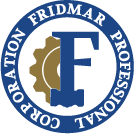
In Ontario and other common-law jurisdictions, legal disputes are subject to what is known as an “adversarial” process. This process is characterized by opposing parties who contend against each other for a result favourable to them.[1] As lawyers, we are taught to act as a zealous representative of your client’s interests and push towards obtaining the most favourable result. Some lawyers take this mantra too close to heart and unnecessarily complicate matters that could otherwise be easily resolved.
Resistance to Alternative Dispute Resolution
In the past few decades, legal scholars, the legislature, and courts advocated for the integration of alternative methods of dispute resolution (“ADR”), such as mediation, arbitration, and a mixture of both. In certain jurisdictions, the Ontario legislature introduced mandatory mediation.[2] More recently, the amended Construction Act introduced an interim dispute resolution model to prevent claimants from unnecessarily prolonging their disputes.[3] One would think that, given the amount of resources available, all parties and their lawyers would move towards these ADR models. In my (albeit short) experience, however, I noticed many parties and counsel still apprehensive to these new, collaborative ways, and rather elect to “battle it out” until one party runs out of patience or resources.
In discussing this resistance to ADR, some lawyers confided that they could not trust opposing counsel not to employ sneaky or strategic tactics. Others identified that their clients were not interested in quick resolution, and would rather inflict harm onto opposing parties as a way of strong-arming better settlement terms. Many had other personal reasons for avoiding ADR. Personally, during my legal training, I was taught the importance of “setting” the playing field and how initiating settlement too early could appear weak and reduce one’s bargaining position. Recently, I was fortunate to experience a form of “collaborative” resolution that showed me the benefit of ADR.
Collaborative Dispute Resolution
This form of resolution originated in the context of family law disputes. In order to avoid formal court proceedings, parties would enter into agreements to act in good faith, disclose documents and information at an early stage, and balance the interest of the parties. This form of resolution is not foreign in construction proceedings either, and is the foundation of integrated project delivery models.[4]
A few weeks ago, I was retained by a client who was experiencing issues with a contractor they hired to renovate their home. At the time I was retained, the contractor already had a lawyer and was gearing up for a legal dispute. Fortunately, the contractor’s lawyer turned out to be a close friend – it was a perfect situation to attempt “collaborative” resolution. Over the course of two weeks, opposing counsel and I managed to diffuse the dispute between our clients and resolve the method in a just manner that provided a fair and equitable outcome to all parties. Everyone was (more or less) content, and the project continued.
I think this scenario was made possible due to the fact that opposing counsel and I had a personal relationship. Even though we both had professional obligations to act zealously in our respective clients’ best interests, we could trust that neither one of us would play games or act unreasonably towards the other. As a result, we were able to speak more freely, disclose more information at an earlier stage, and ultimately arrive at a prompt settlement.
So what’s stopping lawyers from taking this approach with all opposing counsel? There’s a reason why we are required to refer opposing counsel as our “friends” – that is, to encourage amicable relationships and cooperation. There’s a saying in Russian, “trust, but verify.” While lawyers are some of the most skeptical people[5], perhaps we should begin relationships with opposing counsel from a position of trust rather than combat.
The foregoing is for informational purposes only and should in no way be relied upon as legal advice. If you have any further questions, or would like to schedule an appointment for legal advice tailored to your circumstances and business, please contact me at dan@fridmar.com .
[1] Black’s Law Dictionary, online (June 2020), sub verbo “adversary process.”
[2] R.R.O. 1990, O. Reg. 194: Rules of Civil Procedure, r. 24.1.04(1)(2).
[3] Construction Act, R.S.O. 1990, c. C.30, Part II.1.
[4] For more information, see Duncan W. Glaholt and R. Bruce Reynolds, “The Collaborative Settlement of Construction Disputes” (December 2017) Arbitration Law, online: <https://arbitrationlaw.com/library/collaborative-settlement-construction-disputes-american-journal-construction-arbitration-adr> (last accessed 26 June 2020).
[5] Dr. Larry Richard, “Herding Cats: The Lawyer Personality Revealed” (2002) Managing Partner Forum, online:
< http://www.managingpartnerforum.org/tasks/sites/mpf/assets/image/MPF%20-%20Herding%20Cats%20-%20Richard%20-%203-5-121.pdf> (last accessed 26 June 2020).




